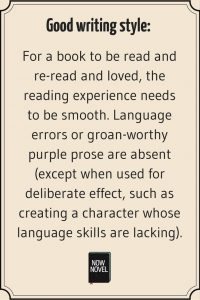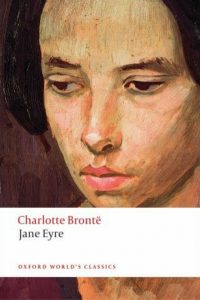Many different factors go into whether a book becomes a classic. Some are classics because they explore significant themes brilliantly. Some become mainstays of language classes because they contain valuable ideas for discussion. Some become classics because they speak to people across geographic and other lines of separation. Here are 7 ingredients of classic novels to include in your own books:
First: A definition of ‘classic’ in the literary sense
The different dictionary definitions of ‘classic’ are a good starting point. Oxford defines something that is classic as ‘judged over a period of time to be of the highest quality and outstanding of its kind.’ As an adjective the term also means ‘of a simple, elegant style not greatly subject to changes in fashion’ and ‘very typical of its kind.’ When used as a noun, it means ‘a work of art of recognized and established value.’
These definitions together define a classic novel. Some become ‘modern classics’ without time passing while others slowly attract recognition. Generally, a classic is a book that stands out for its exceptional quality. Truly classic novels outlast passing, changing fashions. Older classic novels are enjoyable today in global contexts, even if they were written in 18th Century France.
This is key to how to write a classic: It should have some (if not all) of the following 7 features:
1: Memorable and diverse characters
Classic novelists and playwrights such as George Eliot, Charles Dickens and Shakespeare write characters who are diverse and memorable. Classic novels give us insights into the lives and experiences of characters who have interesting backgrounds, temperaments, motivations, loves and hates.
For example, take George Eliot’s novel Middlemarch (1871-72), about a fictitious town in England’s Midlands in the early 1800s. The wealthy character Dorothea Brooke is idealistic and preoccupied with helping others. Dorothea is contrasted with her younger sister Celia who is more pragmatic, beautiful and vain. The wealthy sisters and their family are contrasted with other characters such as Will Ladislaw, a young man who is idealistic like Dorothea yet poorer due to a disinheritance and his own struggle to find and commit to a profession.
These are three examples of Eliot’s vast and diverse cast of characters. Eliot takes care to give each character a vivid, distinct personality. Their individual flaws (Celia’s vanity or Dorothea’s sometimes impractical idealism) provide fodder for believable, enjoyable interactions. There is something about the characters that rings true to human nature.
Eliot’s characters cut across different levels of economic privilege and different world views. The reader is able to understand the specific characters and their stories as well as the culture and society they live in.
Thus, if you’re wondering how to write a classic character study, ask yourself:
- Are my characters diverse: Can the reader tell them apart by their appearances, flaws, values, world views and motivations?
- Are there different degrees of closeness and distance between characters in their personal relationships and economic circumstances? Will the reader get a sense of the breadth and variety of my fictional world’s social conditions?
- Do characters’ relationships and interactions make sense, given their individual motivations and flaws?
2: Good style
For a book to be read and re-read and loved, the reading experience needs to be smooth. Language errors or groan-worthy purple prose are absent (except when used for deliberate effect, such as creating a character whose language skills are lacking).
What exactly is ‘good style’ in writing? To quote our previous post on how to develop your writing style:
‘Writing style, broadly speaking, refers to the way something is written, opposed to the content or meaning of what is said.’
Good style typically features:
- Fitting, effective word choice
- The tone of the writing suits the subject
- Good sentence structure
- Avoidance of dead language (for example clichéd similes and metaphors such as ‘cold as ice’)
This character description from The Shipping News by the Pulitzer-winning author E. Annie Proulx is one example of great style:
‘A great damp loaf of a body. At six he weighed eighty pounds. At sixteen he was buried under a casement of flesh. Head shaped like a crenshaw, no neck, reddish hair ruched back. Features as bunched as kissed fingertips.’ (Pg. 2)
Proulx’s description of the character Quoyle is excellent style because the structure is clear. The language is also concrete and vivid, and the imagery and comparison are striking (‘features as bunched as kissed fingertips’).
Besides great style, classic works of fiction also have vivid settings:
3: Fully realized settings
Charles Dickens’ London or J.K. Rowlings’ Hogwarts (one could argue that Harry Potter is a classic of YA fantasy fiction) both are vivid. Here is Dickens describing London in Oliver Twist:
‘It was market-morning. The ground was covered, nearly ankle-deep, with filth and mire; a thick steam, perpetually rising from the reeking bodies of the cattle, and mingling with the fog, which seemed to rest upon the chimney-tops, hung heavily above.’
Dickens’ description of the outdoor cattle markets that were common in 18th Century London is vivid. It invokes the senses of sight and smell, giving you a clear mental image of the backdrop for the action.
When J.K. Rowling describes Hogwarts castle in Harry Potter and the Philsopher’s Stone, it is suitably vivid, imposing and enticing for a magic school and castle:
‘The narrow path had opened suddenly on to the edge of a great black lake. Perched atop a high mountain on the other side, its windows sparkling in the starry sky, was a vast castle with many turrets and towers.’ (p. 83)
Rowling’s setting description conveys where the school is in relation to its surrounds and evokes a sense of immensity and attraction (the ‘windows sparkling’). Inside the castle, each room is described in detail, creating awe and splendour. Rowling describes the school’s Great Hall thus:
‘Harry had never even imagined such a strange and splendid place. It was lit by thousands and thousands of candles which were floating in mid-air over four long tables, where the rest of the students were sitting. These tables were laid with glittering golden plates and goblets.’ (p. 86)
Rowling works out each detail of her setting, from the seating arrangement of the dining hall to the lighting and cutlery. As in Dickens, it’s easy to imagine the setting.
Character and place are thus important elements of a well-written story. The finest classics also often take us through processes of immense development and change:
4: Satisfying story structure and development
The finest classic novels don’t have plot holes. We see characters undergo significant change and development. Dickens’ Great Expectations, for example, shows the main character Pip developing from a young boy into a well-off young man. This type of plot, the coming-of-age story or bildungsroman, is common to many classic novels. Other examples include James Joyce’s Portrait of the Artist as a Young Man and Charlotte Brontë’s Jane Eyre.
In each of these above-mentioned novels, the story shows the progression of time. Characters overcome hardships and acquire broader understandings of their worlds.
In Jane Eyre, the orphaned title character survives an emotionally abusive home life with her aunt and uncle and later a harsh boarding school. The novel charts her tenacity as she grows from a young, mistreated girl into a quietly confident young woman.
In Dickens’ Great Expectations, Pip ventures out into the world and makes crucial discoveries about his history and his circumstances, leading him to question everything he knew to be true.
While your novel might not be a coming-of-age story, make sure that you show how your characters develop and are changed by new experiences. Structure each chapter around pivotal events that make your story fluid rather than static. The best classic books take us on unforgettable journeys and adventures, whether literal or figurative.
5: Larger, timeless themes and truths
What separates classic novels from fiction that is published and forgotten? For one, (as The Guardian points out) people from diverse backgrounds can read and enjoy it. Why is this? Because classic books deal with larger, significant themes.
In the bildungsromans of Dickens and Brontë, we see themes such as the difficulty of unrequited love and the importance of persevering against hardship. George Orwell’s 1984 shows government surveillance and population control and demonstrates basic truths. For example, the fact that total power corrupts (or, rather, attracts those who are corruptible). A YA publishing phenomenon like Harry Potter has been translated into 67 languages in part because its central themes (such as the power of friendship and the courage required to stop ‘evil’) are universal.
If you’re wondering how to write a classic book, ask yourself (when you’ve created your plot outline):
- What are the central themes of my story? Why these themes in particular? Why are they important?
- Do the story’s events ring true? Will readers encounter true elements of human experience (the strength found in friendship, for example) between my novel’s pages?
6: Classics make connections
Another element common to many classic novels is that they show signs of their literary and historical origins. This is most obvious in books that are based on or inspired by others. Jean Rhys’ Wide Sargasso Sea, for example, was written as a prequel to Brontë’s Jane Eyre, telling the story of the ‘madwoman’ in the attic from Brontë’s book. It takes a more modern perspective on certain issues. It examines, for example, inequality between genders and the complex ways race and social power shape and impact people’s lives.
Whether or not your own novel explicitly references other works of fiction, draw on the traditions of your genre. Weave your inspirations into your book and make connections between topics and fictional predecessors where suitable. Your book will be more layered and will give readers more to unearth and discuss.
7: Classics leave room for interpretation
Telling the reader what to think about the what and why of a story minimizes the reader’s power to make their own meaning. One of the core features of classic novels is that they leave blank spaces and ambiguities.
For example, in Vladimir Nabokov’s extremely controversial novel Lolita (1955), the unreliable narrator Humbert Humbert is a man who has a predilection for young girls. Instead of explicitly condemning his character, however, Nabokov simply shows his actions and lets the reader form her or his own moral or ethical judgement.
This is key to how to write a classic: Trust that the reader can decide how the ambiguities of your story fit together. You don’t have to be judge, jury and executioner of your characters.
Click ‘start your novel’ at the top to start finding your central idea with Now Novel’s Idea Finder – it will help you create a blueprint for a classic in the making.
What are the key ingredients of a classic book in your mind? What makes you return to read a book over and over?




8 replies on “How to write a classic: 7 key elements”
I would add the following that I love…
Pride and Prejudice (Jane Austen)
Ivanhoe (Sir Walter Scott)
A Tale of Two Cities (Dickens)
Gone With The Wind (Margaret Mitchell)
Anne of Green Gables (LM Montgomery)
Little Women (Louisa May Alcott)
Dracula by Bram Stoker. Apart from being a fantastic read with a very unique method of telling the story, its great as a window into one mans perspective of the 19th century with regards to social class, religion, travel, medicine and even views on gender (he wasn’t exactly forward thinking on the last point but its interesting to see those views nonetheless).
Good recommendation, Daniel and good reasons. Thanks!
Great points. I especially liked number 4 about structuring a chapter around pivotal events. I write my story in scenes because I don’t know where a chapter begins or ends.
Hi Alice – thank you! Glad you enjoyed reading. Scenes and other elements shared with the world of film and theatre (such as acts) are indeed useful structuring devices.
OMGGGGG THIS DUMB CLASSICAL LITERATURE ESSAY GMT YOOO!but this helped a lot
Glad this helped you with your essay, RG.
Thanks,
Reading this, I’m rearranging my 2nd novel, hope it will be perfect.